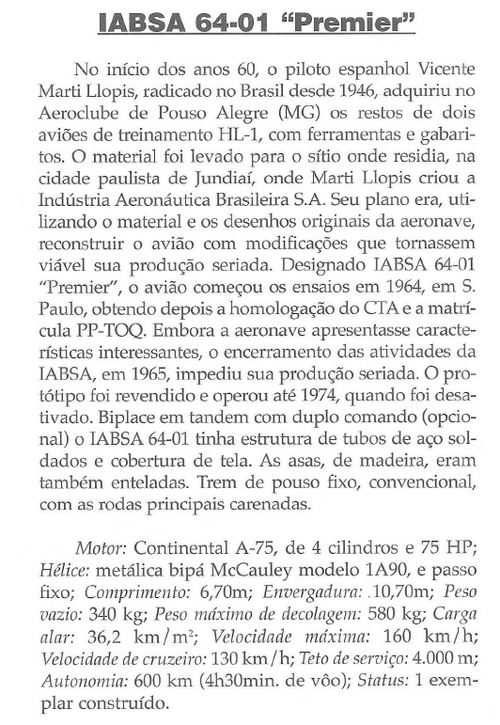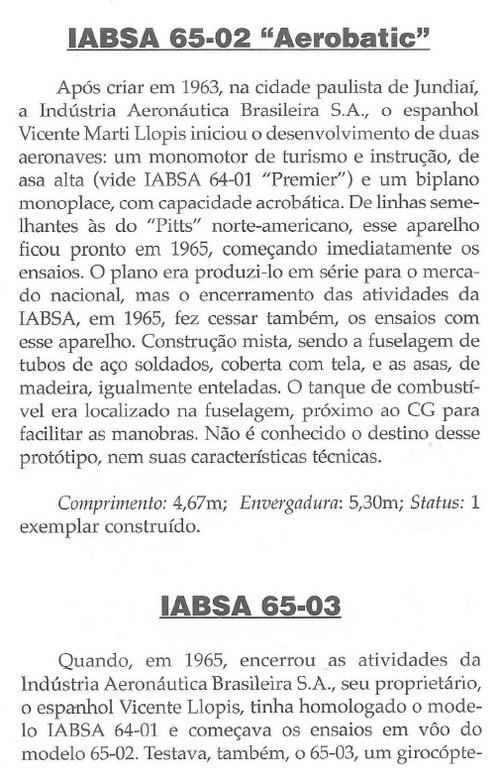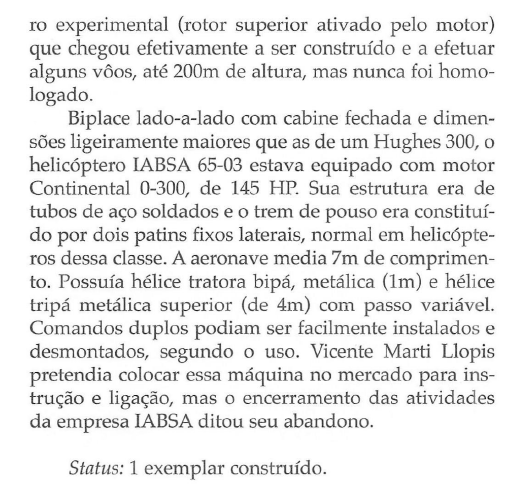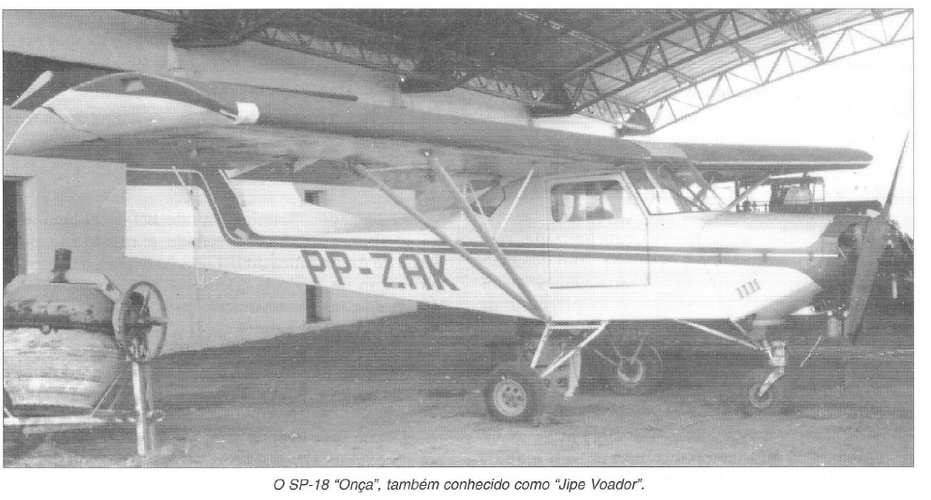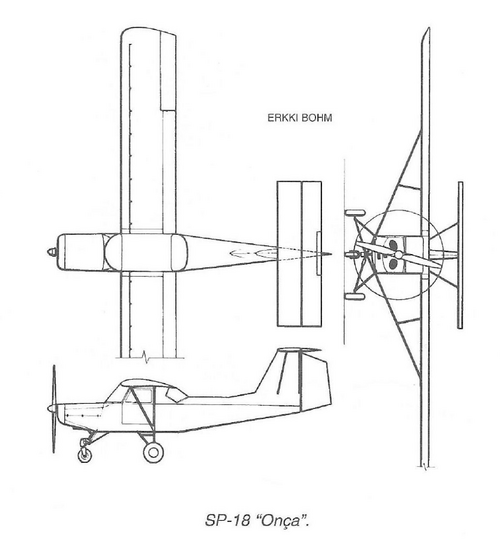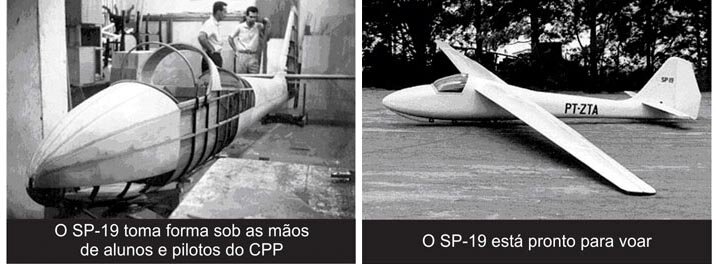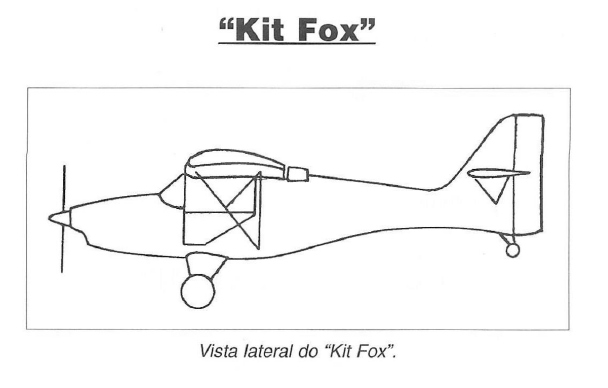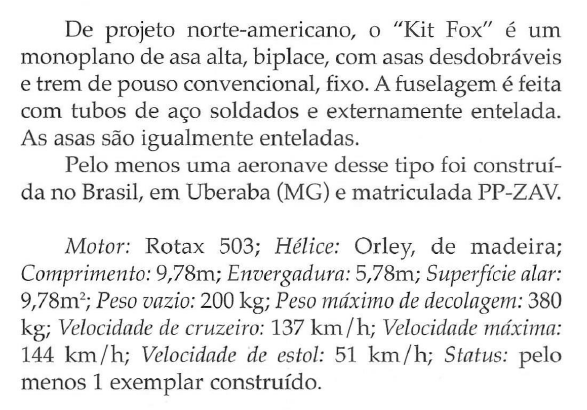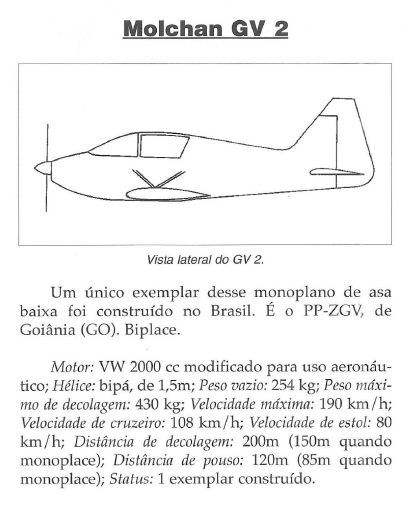From, Enciclopedia de Avioes Brasileiros,
the IABSA 64-01,65-02 & 65-03.
IABSA 64-01 "Premier"
In the early 60s, the Spanish pilot Vicente
Marti Llopis, living in Brazil since 1946, acquired in the
Aeroclube de Pouso Alegre (MG) the remains of two
HL-1 training aircraft, with tools and jigs. The material was taken to the place where he lived, in the
São Paulo city of Jundiaí, where Marti Llopis created the
Indústria Aeronáutica Brasileira S.A. his plan was, using the original material and designs of the aircraft,
rebuild the plane with modifications that make it
its serial production viable. Designated IABSA 64-01
“Premier”, The plane began testing in 1964, in 5.
Paulo, later obtaining CTA approval and PP-TOQ registration. Although the aircraft had character-
interesting features, the closing of the activities of the
TABSA, in 1965, stopped its serial production. The prototype was resold and operated until 1974, when it was deactivated. Two-seater in tandem with double command (optional) the IABSA 64-01 had a welded steel tube structure and a screen cover. The wooden wings were
also entangled. Fixed landing gear, conventional,
with the main wheels faired.
Engine: Continental A-75, 4-cylinder, 75 HP;
Propeller: metallic McCauley model 1A90 bipod, and pitch
fixed; Length: 6.70m; Span: .10.70m; Weight
empty: 340 kg; Maximum takeoff weight: 580 kg; Charge
alar: 36.2 km/m?; Maximum speed: 160 km/h;
Cruising speed: 130 km/h; Service ceiling: 4,000 m;
Autonomy: 600 km (4h30min flight); Status: 1 example
built plate.
IABSA 65-02 "Aerobatic"
After creating in 1963, in the São Paulo city of Jundiaí,
the Brazilian Aeronautical Industry S.A. the Spanish
Vicente Marti Llopis started the development of two
aircraft: a single-engine tourism and instruction
high wing (see IABSA 64-01 “Premier”) and a biplane
monoplace, with acrobatic ability. With lines similar to the North American "Pitts", this device
was completed in 1965, immediately starting the
essay. The plan was to produce it in series for the national market, but the closure of the activities of the
IABSA, in 1965, also stopped the rehearsals with
this device. Mixed construction, with the fuselage of
welded steel tubes, covered with mesh, and the wings, of
wood, equally woven. The fuel tank was located in the fuselage, next to the CG for
facilitate maneuvers. The fate of this
prototype, nor its technical characteristics.
Length: 4.67m; Span: 5.30m; Status: 1
built exemplar.
IABSA 65-03
When, in 1965, the activities of the
Indústria Aeronáutica Brasileira S.A., its owner,
the Spaniard Vicente Llopis, had approved the TABSA 64-01 model and was beginning the flight tests of the
model 65-02. He was also testing the 65-03, an experimental gyrocopter (upper rotor activated by the engine)
which was actually built and carried out
some flights, up to 200m high, but it was never approved.
Side-by-side two-seater with closed cabin and dimensions slightly larger than a Hughes 300, the
IABSA 65-03 helicopter was equipped with engine
Continental 0-300, 145 HP. Its structure was of
welded steel tubes and the landing gear consisted of two fixed lateral skids, normal in helicopters.
of this class. The aircraft measured 7m in length. It had two-blade, metallic (Im) tractor propeller and propeller
upper metallic tripod (4m) with variable pitch.
Dual controls could be easily installed and
disassembled, according to use. Vincent Marti Llopis
intended to put this machine on the market for instruction and connection, but the closure of activities
of the company IABSA dictated its abandonment.
Status: 1 copy built.

